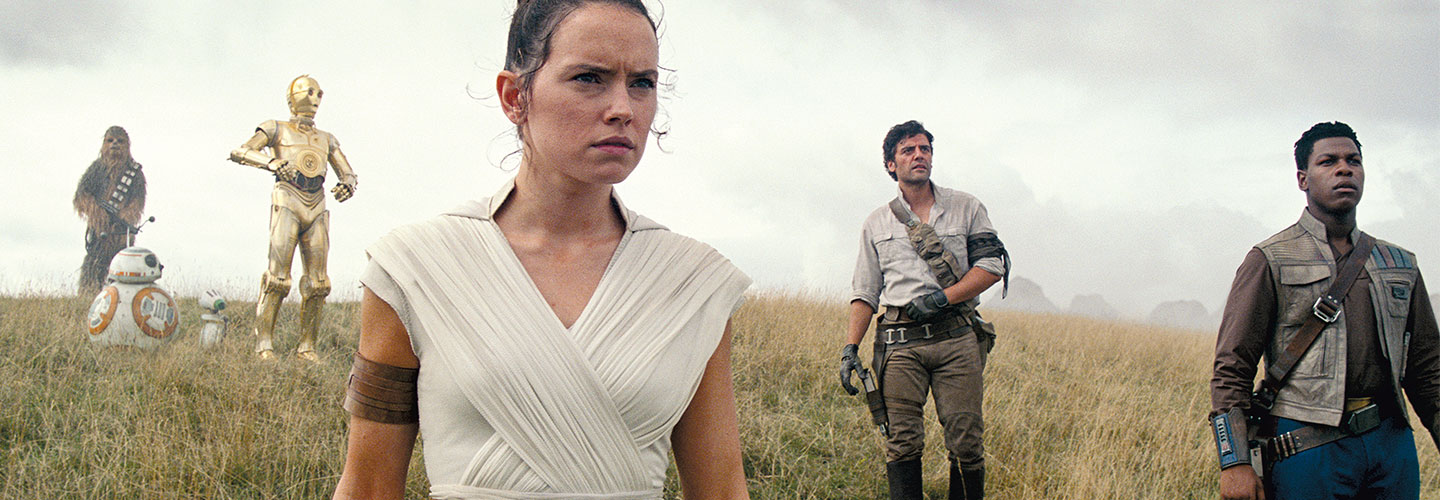The Wadi Rum desert is one of the harshest places on Earth. It’s in the Middle Eastern country of Jordan. Temperatures can climb above 100 degrees. The sun bakes everything in sight.
But last fall, the Wadi Rum was alive with activity. Robots rolled through the orange sand. A giant, furry creature named Chewbacca stomped around in the heat. For several weeks, the Wadi Rum was not just a desert on Earth. It was the Star Wars planet Pasaana.
A film crew was making The Rise of Skywalker. It’s the last movie in the famous series. For the crew, it wasn’t an easy job. They had to build roads into the desert. They huddled in tents during sandstorms. Actors sweated through chase scenes.
Of course, they all could have stayed home. They could have filmed the movie in a Hollywood studio. Computer graphics experts would have added the landscapes in the background later. But the movie’s director—the person who leads all the actors and crew members—wanted everything to look real. He wanted sand in people’s hair and sun in their eyes.
Over the years, the creators of Star Wars have made us believe in dozens of imaginary planets. They’ve had help from some strange places right here on Earth. Here’s a quick tour of a few.
The Wadi Rum desert is in Jordan. That’s a country in the Middle East. This desert is very hot. The temperatures can be more than 100 degrees. It is one of the harshest places on Earth.
Last fall, the Wadi Rum became something else. It became Pasaana. That’s a planet in Star Wars. Robots rolled through the sand. A giant creature named Chewbacca stomped around.
A film crew was making The Rise of Skywalker. It’s the last movie in the series. Filming in the desert was hard. Actors sweated during their scenes. When sandstorms hit, the crew had to wait in tents.
They could have stayed home. They could have filmed the movie in a studio. Computer graphics experts could have worked on the movie later. They could have added the landscapes. The director of a movie is the person who leads all the actors and the crew. The director of this movie wanted everything to look real. He wanted sand in people’s hair. He wanted sun in their eyes.
The world of Star Wars has many different planets. They seem real to viewers. That’s because they are strange places found on Earth. Here are a few.
The Wadi Rum desert, in the Middle Eastern country of Jordan, is one of the harshest places on Earth. Temperatures can climb above 100 degrees, and the sun bakes everything in sight.
But last fall, the Wadi Rum came to life with activity. Robots rolled through the orange sand, and a giant, furry creature named Chewbacca stomped around in the heat. For several weeks, the Wadi Rum was not just a desert on Earth—it was the Star Wars planet Pasaana.
A film crew was making The Rise of Skywalker, the last movie in the famous series. The job was a major challenge for the crew. They had to build roads into the desert and huddle in tents during sandstorms. The actors sweated through chase scenes.
Of course, they all could have stayed home and filmed the movie in a Hollywood studio. The landscapes could have been added to the background later by computer graphics experts. But the movie’s director—the person who leads all the actors and crew members—wanted everything to look real, with sand in the actors’ hair and sun shining in their eyes.
Over the years, the creators of Star Wars have made dozens of imaginary planets seem real. How? With help from some strange places right here on Earth. Here’s a quick tour of
a few.

